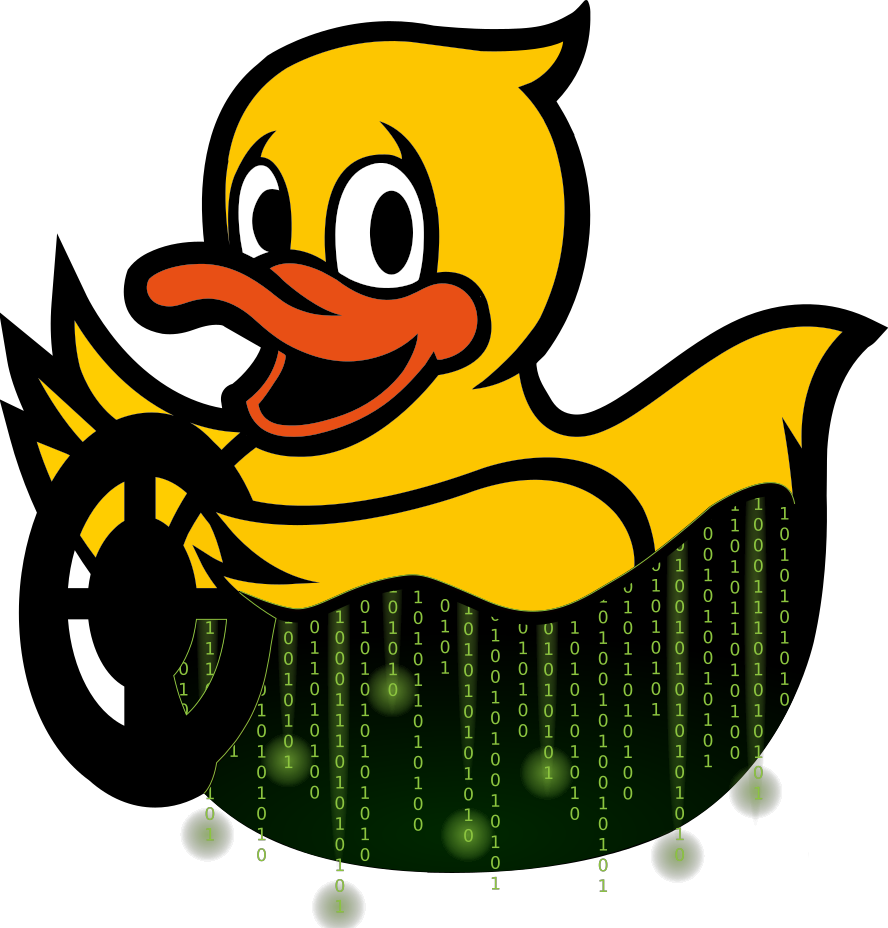Maps
Contents
Maps#
This chapter describes Duckiematrix Maps.
What you will need
Completed Installing and Running the Duckiematrix.
What you will get
Knowledge on Duckiematrix Maps.
Introduction#
A Map is defined using a set of YAML files known as Layers.
Keys#
A Key has two functions:
It serves as a unique identifier for an object.
It encodes the hierarchical structure of a
Layer.
The frames Layer#
A Frame object has the following pseudo-schema, where the relative_to field will be discussed later in this section and the pose and twist (optional) fields describe the 3D pose and twist of the object, respectively:
relative_to: str | ~
pose:
x: float
y: float
z: float
roll: float
pitch: float
yaw: float
twist:
v_x: float
v_y: float
v_z: float
w_x: float
w_y: float
w_z: float
A pseudo-schema of the frames Layer is as follows, where the frames object is a mapping between object Keys and their Frame:
version: str
frames: dict[str, Frame]
The frames Layer is defined using a frames.yaml file, whose contents are similar to the following, where the map_0 object is positioned at the origin and the map_0/street_light_0 object is positioned 0.6 m along the x and y axes, and 0 m along the z axis, with a rotation of 3.1415 rad about the z axis:
version: 1.0
frames:
map_0:
relative_to: ~
pose:
x: 0.0
y: 0.0
z: 0.0
roll: 0.0
pitch: 0.0
yaw: 0.0
map_0/street_light_0:
relative_to: ~
pose:
x: 0.6
y: 0.6
z: 0.0
roll: 0.0
pitch: 0.0
yaw: 3.1415
In the example above, the map_0/street_light_0 Key indicates that the street_light_0 object is a child of the map_0 object.
Therefore, if map_0 moves, street_light_0 will rigidly move with it.
Note
The existence of an object’s ancestors is not enforced.
Therefore, a Layer in which an object with Key a/b/c is defined but neither a nor a/b are, is still a valid Layer.
In the case of the frames Layer, objects a and a/b would be created (such that b is a child of a) and their states would be set to coincide with the origin’s state.
Note
While certain Keys suggest the types of objects they refer to (e.g., map_0/street_light_0 likely refers to a street light), no assumptions can be made about the nature of the objects simply by looking at their Keys.
The relative_to field#
While the path-like structure of Keys encodes the hierarchical structure of a Layer, we may want to, for example, define the frame of an object with respect to another while keeping them on different branches of the hierarchy.
In this case, the relative_to field can be used.
For example, in the following frames Layer, we want to position the map_0/vehicle_0 object 1 m from the map_0/street_light_0 object along the x axis:
version: 1.0
frames:
map_0:
relative_to: ~
pose:
x: 0.0
y: 0.0
z: 0.0
roll: 0.0
pitch: 0.0
yaw: 0.0
map_0/street_light_0:
relative_to: ~
pose:
x: 0.6
y: 0.6
z: 0.0
roll: 0.0
pitch: 0.0
yaw: 3.1415
map_0/vehicle_0:
relative_to: map_0/street_light_0
pose:
x: 1.0
y: 0.0
z: 0.0
roll: 0.0
pitch: 0.0
yaw: 0.0
Note
While we could have achieved the same result without the relative_to field, by using the pose of the map_0/street_light_0 object with respect to the map_0 object, this would have required a-priori compute and a loss of information, as well as a loss of readability and editability of the scenario.
